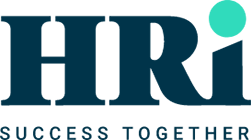Latest from HRi
Am I Selling a Service or Product? How to Productise to Achieve Higher Fees
HR and People Consultants are in the business of selling services, right? The answer to this question whilst seemingly straight forward is in fact more complex than it would at first appear.
Whilst most HR and People consultants are busily selling services and their time on a per hour or retained basis. A small number are leading the charge to transform how their industry sell their valuable expertise.
You see when you sell services on an hourly or retained basis you commoditise your services. This may seem like a good thing in that it means a steady stream of work, yet it leaves you with several issues which can severely impact your business
- Clients simply don’t value commodity services. Retainers become a resource to be consumed and an hour of your time is simply not valuable to your client.
- Growth in sales does not mean uniform growth in profitability. When you need to hire staff profit will often drop whilst you build back to capacity. Often at the expense of your own earnings.
- As your clients don’t value your service you often find yourself at the back of the line when it comes to payments. This puts the security of your business at risk.
So, what are these other HR and People Consultants doing?
A Service that is not a service
This small group of consultants are turning their services into products.
Productising services changes the dynamic of their value proposition. Intangible services become tangible products which are less easily compared to your competitors. Instead clients compare one product to your other offers.
This leads to some key changes in how clients view what is being provided:
- Clients become involved in selecting the right product for them. This increases client buy-in and their view of the value on offer increases.
- With this increase in perceived value clients become less cost focused. Instead focusing on which solution best solves the problems they are experiencing.
- Clients become willing to pay up front to get this value.
This is all well and good but how do I go about this productisation? I hear you ask…
#1 Decide upon what service packages (products) you want to offer
There is nothing worse than doing something you dislike all day. So, if you have always wanted to specialise your consulting offer this is a great opportunity to do just that. Set out the services you want to offer and build you packages around these.
#2 Create different packages
Once you know which services you want to offer, break them down into their component parts. Then arrange them into three categories
- Legal Requirement
- Not required but preferable
- Nice to have to complete the service
Those service components in the first group become your entry level package. Groups 1 & 2 combined become your mid-tier package, and all groups together become the base for your top package.
#3 Decide upon the name and pricing of your services
Make the names short and meaningful to each level of your offer. This ensures that they are memorable in case the client wishes to think on your offer, or even recommend it to a friend.
When setting the pricing make sure that there is a sizable jump in price between packages. If you feel that there is not sufficient value separating the tiers look at ways to increase the value of the higher package.
For example: If we take the provision of template policy documents. Instead of having one offer of a suite of documents for £900 you could offer three packages of documents:
Essential – £500
Only the Policies required by law, provided as templates for completion by the client
Document Pro – £950
The documents from essential, plus non-essential policies provided as templates for client completion
Evergreen policy documents – £1500
All Documents fully completed with an update service as legislation changes
But how does this translate into higher fees?
Research tells us that when presented with three options most clients will choose either the middle or the higher option. In the above example; both the middle and high options yield higher fees than before chunking the documents into different packages.
Clients are willing to pay for what they want if they can see the value. Having three packages presented together at different price points creates a cognitive image of the value on offer to the client.
By choosing between the packages on offer they are deciding the level of value they are willing to pay for. This in turn leads to less haggling from the client in the sales meeting.
Value or Commodity
So now you are at a crossroads, do you carry on as you always have pricing based on time and being seen as a commodity by your clients?
Or..
Do you review your pricing strategy, productise and command the higher fees deserving of your expertise and the value you provide?
Over the last 20 years Ben Rendle has built a career focused on helping businesses to grow their profitability through the use of effective pricing and other management accounting techniques. He started his career working within industry before opening BR Accounting & Business Services Ltd offering pricing & profitability consultancy and coaching alongside a range of done-for-you accounting services.”
Ben Rendle FCMA
Director
BR Accounting & Business Services Ltd


